Causes of Tsunamis
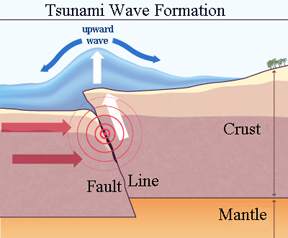 A tsunami is a series of large ocean waves often generated by landslides, volcanos, but most of ten, a large undersea earthquake that displace the ocean floor. Any disturbance in the ocean that causes the displacement of large amounts of water could result in a tsunami. Not all earthquakes generate a tsunami. To generate tsunamis, earthquakes must occur underneath or near the ocean, be of a large magnitude, and create vertical movement of the sea floor.
A tsunami is a series of large ocean waves often generated by landslides, volcanos, but most of ten, a large undersea earthquake that displace the ocean floor. Any disturbance in the ocean that causes the displacement of large amounts of water could result in a tsunami. Not all earthquakes generate a tsunami. To generate tsunamis, earthquakes must occur underneath or near the ocean, be of a large magnitude, and create vertical movement of the sea floor.
Generally, earthquakes on strike-slip faults, such as the San Andreas, do not by themselves generate tsunamis. In some instances, large strike-slip fault earthquakes may trigger landslides which could cause a local tsunami.
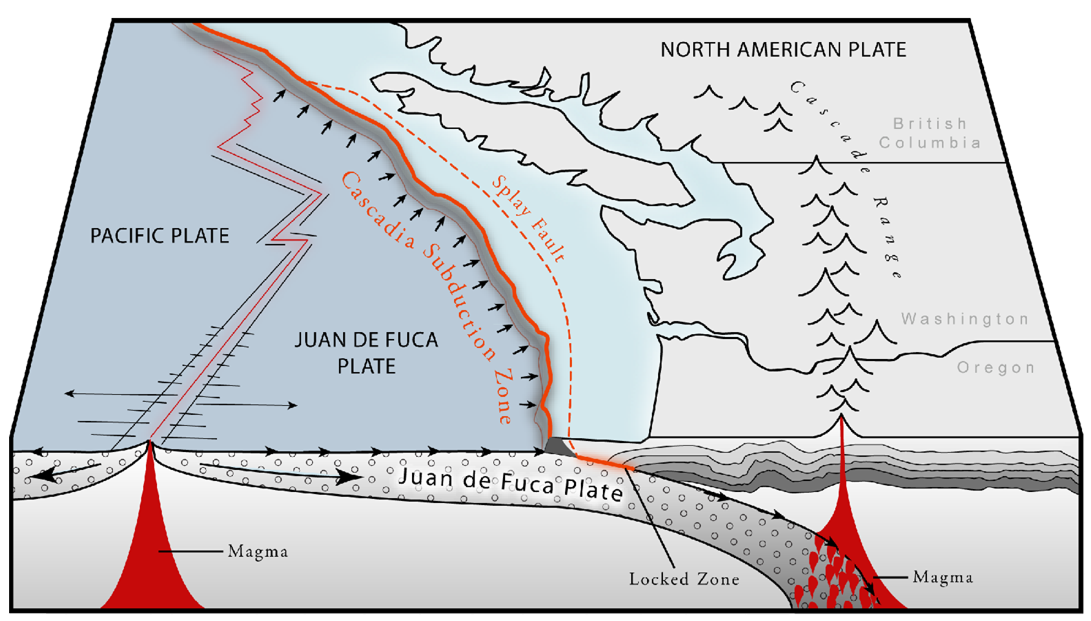
Most tsunamis are caused by earthquakes generated on a subduction zone, an area where one tectonic plate is forced under another plate. In subduction zones one plate is forced down and an adjacent plate is forced up causing an earthquake. The movement of the plates displaces water on the ocean floor vertically, resulting in a wave which then propagates horizontally through and across the entire ocean.
Cascadia Tsunamis – California’s Near Source
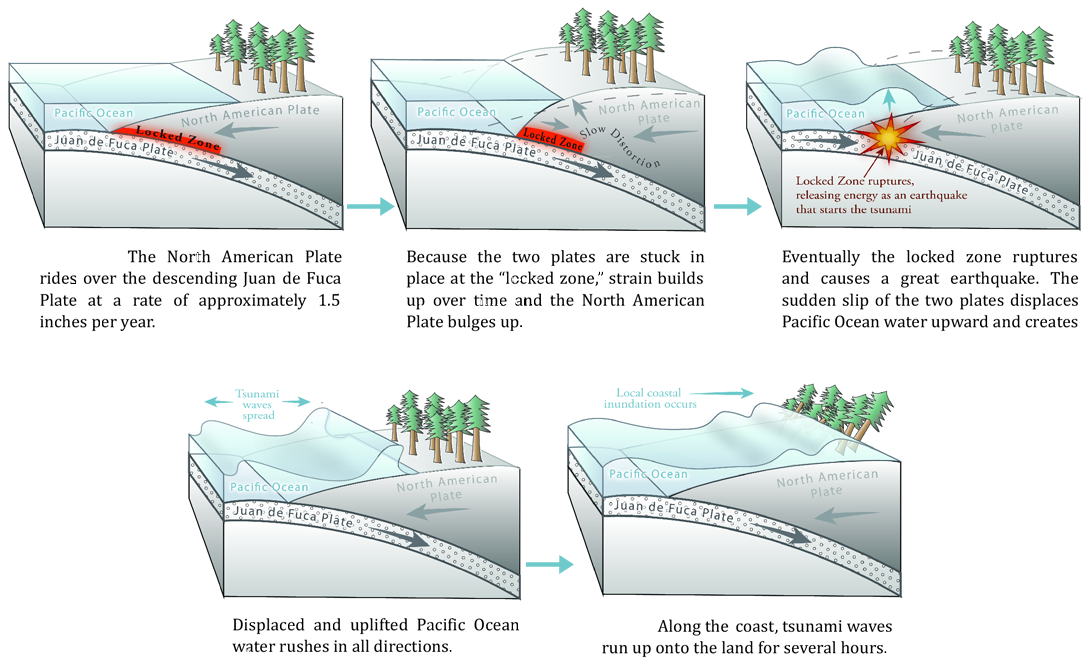

Eventually, water rushes landward and may flood the shoreline resulting in inundation of dry land. While tsunamis can occur in any oceanic region in the world, large earthquakes take place on the Pacific Ocean basin than anywhere else. For more information on a Cascadia earthquake and tsunami please visit The Big One – Cascadia by the Redwood Coast Tsunami Work Group. Also, see You Live in Earthquake Country for more information about Earthquakes in Northern California.
Distant Source Tsunamis
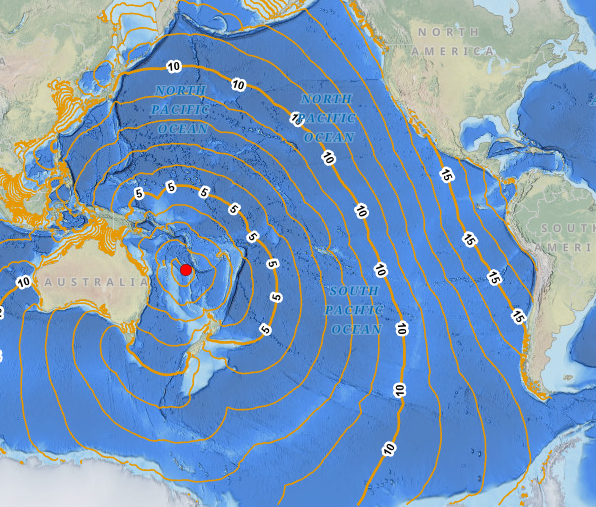
After an event on the ocean floor (earthquake, landslide, volcanic eruption) displaces water, a wave is formed which travels out from where the event occurred. Some of the water travels across the ocean basin. Scientists refer to this event as a “distant source tsunami”. Distant source tsunamis usually provide more time than near source tsunamis for warning and preparation.
During distance source tsunamis, you may receive official instructions from your local government officials through the media.
Near Source Tsunami
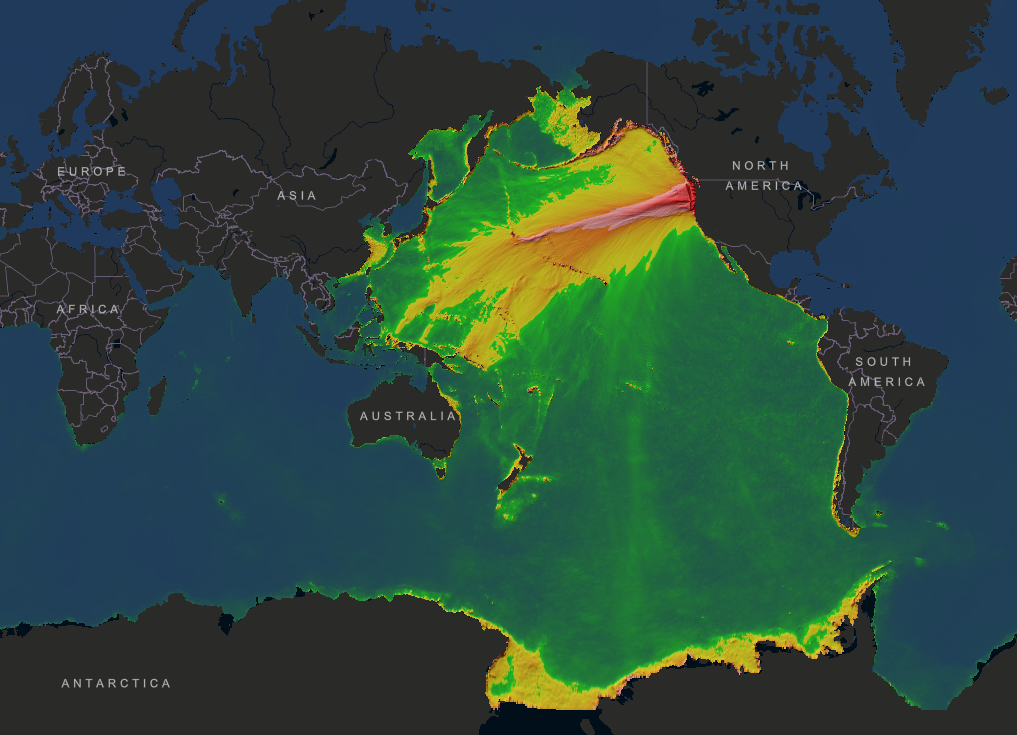 Near source tsunamis are caused when a subduction zone (such as Cascadia) is immediately offshore from your location. They can be more dangerous as they are closer to shore and can reach your shoreline within minutes of the originating earthquake. They may also be larger than a wave coming from across the ocean when they do strike, as their energy has not had time nor distance to dissipate. Near source tsunamis provide little to no time for warning, evacuation, first responder preparation and dangerous circumstances for response.
Near source tsunamis are caused when a subduction zone (such as Cascadia) is immediately offshore from your location. They can be more dangerous as they are closer to shore and can reach your shoreline within minutes of the originating earthquake. They may also be larger than a wave coming from across the ocean when they do strike, as their energy has not had time nor distance to dissipate. Near source tsunamis provide little to no time for warning, evacuation, first responder preparation and dangerous circumstances for response.
For near source tsunamis, do not wait for official warnings to evacuate. Strong shaking and other natural warning signs are your indicators that a tsunami could be on the way.
Keep Learning
Learn more about tsunamis from the National Oceanic and Atmospheric Administration (NOAA).
